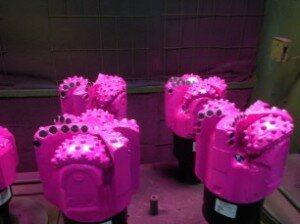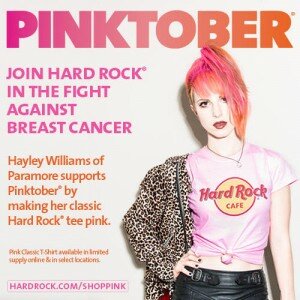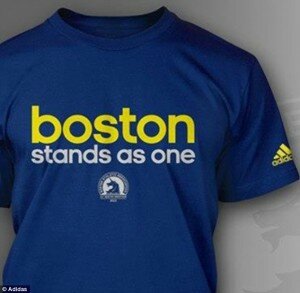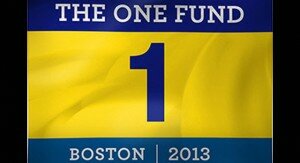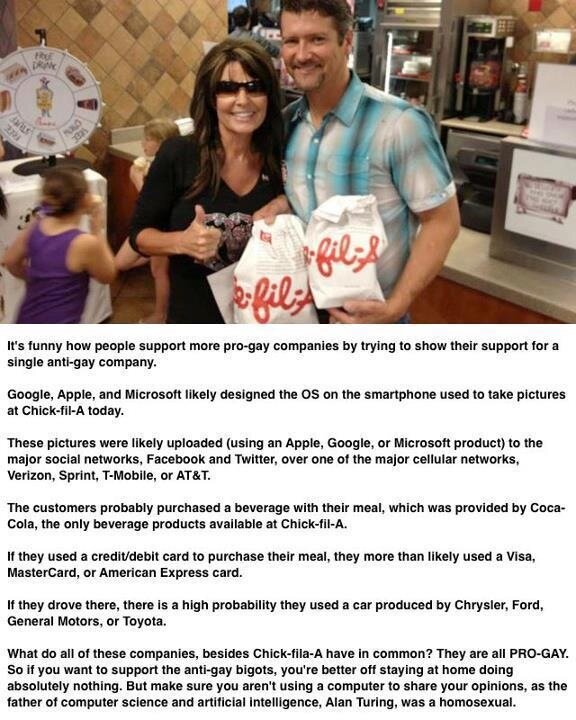I received this email today as part of a listserv I am on. It is written by a Turkish media scholar. I felt it was important to disseminate his words.

UPDATE: What’s going on In Turkey?
Irfan Erdogan
Followings include facts, results of my participative observation in
Ankara and Istanbul (Taksim/Gezi) between June 5 and June 17 and views
of many people that I talked with:
But first I would like to write the fact about the forceful evacuation
of the Gezi park:
It was Saturday. Probably more than a million people, including
tourists, visited the Gezi park on Saturday. Taksim and Gezi Park was
full of people. They were continuously moving (some were coming others
were leaving). I went back to Ankara and brought my wife, my teenage kid
and nephew to the Gezi Park so that they witness the history in making
in the Gezi park and see that what they hear about Gezi Park are bunch
of lies produced by those who cannot change the facts/realities but can
create false images about realities in the minds of especially their
followers by forging and disseminating lies. In the park, they walked
and heard the announcement that there would be evening and night
activities such as theatre show, poem reading, dancing, music etc. There
was a festival mood in the park. We left the Gezi park and walked down
the Istiklal/Independence Street in Taksim just like masses of people
do. Later, we decided to return the park. We approached the park’s large
entrance about 50 meters. The park and surroundings were packed with
people. We did not hear any announcement by police. But later I learned
that police asked people to leave the park and Taksim. It seems that
people did not listen to police, because nobody expected that police
would attack hundreds of thousands people with gas and pressured water.
Suddenly, police started using pressured water that has an unknown
chemical in it. People started running. In a few minutes, Gezi Park was
covered with tick gas clouds. They used something other than gas and
water: I heard noises of bombs (extremely loud noise) and saw fires
where the bombs fall inside the Gezi Park. Police shot gas bombs to
people all around the park and on the streets of Taksim. I, my wife and
my two teenagers found ourselves in between people and police, and two
gas bombs were thrown to my teenagers. Luckily, two youngsters rushed
and took the bombs and threw them back to police. Eyes burning and lungs
full of gas, everybody was gasping for air and some were screaming for
help. At one moment, I thought I was going to die. I did not have my gas
mask and protective helmet, because I did not expect police would attack
during the day. I lost my wife and kids in the crowd. I, like many other
people, rushed into a hotel at a side street. I was choking and my
throat and inside were burning. I, with other people, stayed about half
an hour there, because street were full of gas and some police (not all
of them) were threatening us with their batons (There were people who
have their house right next door or around the corner, people who were
on their way to their home who support the demonstrations: People were
extremely angry). I had to go back to the Gezi park to see what is going
on and to get my car because I had parked my car right in front of it
(about 75 meters from the Divan hotel where wounded people were
treated). Police moved down the street away from the Gezi Park and I
left the hotel and ran toward the park. The park was in complete
darkness and completely empty. I saw fires at the street. My car was
there, only one car, surprisingly untouched. There were many police on
the street and in front of the Divan Hotel and a lot of demonstrators
along the street. Police were throwing gas on them. I took my car and
drove about 800 meters down the street where there was no police action.
I followed a small crowd back to where the action is. We saw gas smoke
in front of the Divan Hotel. (Later I learned that police threw gas bomb
inside the hotel. The Prime Minister was very angry at people and hotels
that opened their doors to people/demonstrators. He and other government
officials said that these hotels will be punished. He was furious and he
said that he knows who sent food to Gezi Park and let the doctors treat
the wounded in their premises. He threatened them by saying that what
they did will not remain unpunished). Police also threw gas toward the
street that I was at and chased the people. I run back too and took my
car and moved further away. I lost my direction because I do not know
Istanbul. I saw people looking for their kids, friends and relatives.
(Today,Monday, I learned that there are over 450 missing persons. We
also do not know what police did the demonstrators that they arrested).
I was lucky because my wife and kids have mobile phones.
Demonstrators/people were defending themselves in various streets
(especially Istiklal (independence) street. I spent almost an hour to
find my wife and kids. We left with car. We saw a lot of people walking
along one of the main highway. We went to a relative’s house and we saw
that the mayor of Istanbul called gendarme (a special section of the
army, like National Guard) for help to stop the people walking on the
highway.
On Monday, the assistant of prime minister declared that they will use
the army if needed.
On Sunday, all the roads going to Taksim were closed down and
transportations were suspended. However, we saw people demonstrating
around the Taksim and later other places in Istanbul.
Right after the evacuation of Gezi Park, Mteh ayor of Istanbul (who
behaved two-faced: as one person complained, he fooled people by kind
and considerate words like a satan before the attack and ordered the
police attack and lied afterwards) said in the news that police made
announcements about 40 minutes and asked people to leave the park. This
part of the speech was right. But the following explanations of the
mayor were sheer fabrication: He said that they evacuated the park after
people left the park and there were only 29 wounded. On the contrary,
the inside of the park and Taksim were full of masses of people when
police started the attack. He said nothing about the attack of police at
the masses of people all around the park, especially at the Istiklal
Street. He did say nothing about gassing the people on the streets,
because, we know that he and prime minister consider everybody who goes
to Gezi Park as enemy.
The prime minister, police and his followers claim that the
demonstrators are a marginal group. First of all, demonstrators are not
a marginal group because millions of people are demonstrating all over
Turkey. The prime minister, police and followers claim that the marginal
groups have no right to exist and demonstrate; demonstrators can be
gassed, attacked, arrested and beaten up. Participative democracy means
inclusive understanding, not exclusion of those who are not the
followers of the governing party.
The European Union Speaker said that Erdogan performed good deeds
for democracy such as measures he took and arrests he made in the army.
The EU speaker is completely wrong: The Europeans cannot comprehend how
the contemporary reactionary forces work: they ride the democracy train
with using democratic rhetoric while cunningly implementing their
policies of anti-democratic change. (1) The ruling party in Turkey has
to take revenge from the Turkish army because The army had the policy to
expel reactionary elements from the army,(2) has to transform Turkish
army into the army of the reactionary party dictatorship. The west,
especially the U.S. administrations still keep on creating monster
rulers in Africa, Latin America, Asia and all over the world. Some of
these monsters such as Saddam and Noirega later bite the hands that feed
them, and the west engages in policies to get rid of them.
There is another side of the situation: European rulers who invaded
Turkey after the First World War, but lost at the end, have found the
chance of revenge from Atatürk via the Erdogan government, just like the
reactionary forces of Ottoman Empire found a chance of revenge via the
same government. Pursuing the aim of historical revenge, Europeans close
their eyes to the fact that the main goal of Atatürk was to establish an
independent state of western type. They are, just like the reactionary
forces in Turkey, after taking a revenge.
1. Now there is no Gezi Park movement in Gezi park, but people are
demonstrating against the government all over Turkey: Everywhere in
Turkey is Gezi Park. People say the issue is not saving a park from
plunder and misuse by powers who abuse religion and religious beliefs to
rule and destroy democracy in Turkey using the name of democracy,
freedom etc. The issue is the struggle against the political party that
is making the Turkish state “a state of a reactionary party supported by
the some Western interests”. They say the issue is to fight the empire
of lies and oppression. They say the party dictatorship of Erdogan is
aimed at eliminating democratic historical and cultural foundations of
Turkish republic. His followers see themselves as “soldiers of the
Ottoman Empire,” not soldiers of democracy, freedom and human rights.
2. The demonstrations in Turkey did not end after the forceful
evacuation of Gezi Park. It is easy to guess that there will be many
“Gezi Parks” in Istanbul and other cities.
3. People in many cities in Turkey are still demonstrating. Police
are attacking people all around and many places day and night in Istanbul.
4. We do not know how many people are injured since the forceful
evacuation of the GEZİ Park. But we can expect more death and injuries
since the demonstrations continue all over Turkey. However, we have some
statistics before the evacuation. The following statistics excluding the
number of deaths show only the number of people who asked for medical
treatment. A lot of people do not ask medical help either because of the
fear that they will be included in the list of government (blacklisting
for immediate and later punishment) or because they think they do not
need medical help (Numbers of these people — e.g., I still have nausea
from the gas — are probably hundreds of thousands. I also saw young
demonstrators with dislocated shoulders and wounds all over their
bodies: they do not seek medical help because they do not want to leave
the struggle even for medical treatment).
5. Doctors, medical students and medical workers who helped the
wounded in the park and in Divan Hotel were arrested by police. The
governing forces consider and declare anyone who treats the wounded as
enemy to be punished.
6. Lawyers who support the demonstrators were arrested.
7. Today (Monday), the labor unions performed one day work stoppage
all over the country.
8. According to Statistics of the Chamber of Turkish Doctors, Until
June 14 (before the evacuation), there were 11823 wounded and 5 deaths,
and according to the records of the Turkish Human Rights Foundation,
2636 people arrested. 48 of them were arrested because of their twitter
messages. These numbers are increasing since the evacuation. The
government speakers declare that they will find and prosecute those who
used the internet for the purpose of demonstration.
9. Now there are a teenager and a university student in extremely
critical condition in hospital.
10. There is visual record of the police officer who shot in close
range, with a 9 mm handgun, at one of the protesters who died later.
There are many visuals about how police brutally beat people, however,
there is no action taken by the justice department.
11. People think that the prime minister divides the people as “US”
and enemy “THEM”. Speakers in pro-governmental media use lies, curses
and threats; they promote hatred, enmity and hostility towards people
who are not with them. Strong and feverish hate speeches fill the air
day and night.
12. While pro-government media incite hate and hostility, few media
that provide news about the demonstrations are fined by the RTUK (RTUK
is a government controlled institution theoretically similar to The U.S.
Federal Communication Commission), and the license of one tv station was
revoked.
13. In order to justify the oppressive measures and policies, they
ask people questions like “Do you want the terror to be ended?” There is
only one answer to this question: “yes”, and then they declare that
people support them.
14. According to people, the prime minster does not tell the truth
and uses and repeats many fabricated lies in his speeches that include:
a. He said 17 people died during the Occupy Wall Street
demonstrations (He justifies killing by the fabricated lie that the US
Embassy statement was invalidated. People say that no human being tries
to justify oppression and killings by the killings and oppressions
happened elsewhere). This is only an example of many lies that are put
into circulation and used by the Turkish prime minister and propagandists.
b. He repeatedly says that Gezi Park smells like urine and
demonstrators shit everywhere in the park. (There is one modern toilet
in the park, continuously cleaned by the attendants and open 24 hours.
There are also modern portable toilets. There were over 900 tents and
10000 citizens/people staying 24 hours in the park; and they were mostly
highly educated young people: They do not have the custom of shitting
where they sleep).
c. He claims that girls with turban (turban is the fashion dress of
the industrialists who market their goods by using/abusing Muslim
beliefs) are molested in Gezi Park. (I saw girls and ladies with Turban
walking in Gezi Park and nobody bothered them. There is no probability
of molestations, because people in the park are for freedom, human
rights and democracy, not for the oppression).
d. He claims that demonstrators engage in sexually indecent
activities in the park. The prime minster also talked about girls
sitting on the lap of men in the park. (He means girls are making sex
with many men in the park. I was there and spent a few nights and did
not sleep all night like all of them, because always there were rumors
about police attacks at certain hours of late night: People staying in
the park were there not for sex but for freedom, democracy and human
rights. Furthermore, people resent such interference of government to
their life and decisions and fabricated lies. This is one of the main
reasons that people are in demonstrations).
e. He, angrily as usual, repeats that demonstrators entered the
mosque with their shoes on and drank alcohol in the mosque. (In order to
believe in such claim a person should be really mindless or heartless,
because people were escaping from the police, they were gassed and they
were trying to save their life, and hodja –priest of mosque— let them
in and Mosque became a temporary infirmary to treat these people. People
were in pain, some were in shock and some were screaming. Reacting to
lies, the hodja declared that nobody drank alcohol in the mosque. Hodja
was punished for telling the truth: He is not working there anymore.
f. He calls Ataturk and Inonu (two founding leaders of Turkey) “two
drunkards” and accuses the people in Gezi park by saying that they use
alcohol. People resent that the prime minister calls the founding
leaders “two drunkards” and resent the administration’s interference
into their life, decisions and things they do. I saw some youngsters
drinking beer in the park; it is their choice as long as they do not
bother other people. I also saw two or three drunk bummers –if not
plain cloth police– coming to the park late at night and trying to
create disturbance.
g. He talks about 50 percent of the population that support him. In
the last election, 46 million of people voted and the governing party
received 21 million votes. The population of Turkey is nearly 80 million.
h. The prime minister calls demonstrators “looters.” There was not a
single incidence of looting. Demonstrators were mostly highly educated
and sensitive people with good heart and social conscious. They were
from all walks of life including high school and university students,
artists, professionals such as lawyers and teachers.
15. He degrades and insults people who did not vote for him and
demonstrates against his deeds:
a. He degrades women by saying that “pots and pans, all usual tune”
(Namely, he calls women’s demonstrations as “hot air”. He degrades women
who use their pasn and pots to make noise on the street and from their
houses’ balcony to express their opinions and support for demonstrations).
b. He calls demonstrators and his opponents “bunch of hoodlums.” (The
fact is that the great majority of people with high education do not
vote for him. His supporters unfortunately are uneducated, misled and
misinformed masses. Some of these masses get financial and food help
from the government. A lot of poor people vote for the governing party,
because they get periodical food assistance.
16. He continuously threatens people by stating that they will hunt
down those who participated in and supported the demonstrations and
provided food and shelter to them. Examples of hunting down and punishment:
a. Storming in their homes and arresting youngsters using twitter and
internet.
b. Announcing that “we know who they are (people and institutions
that bring food to demonstrators, hotels that open their doors to people
who escape from police gas and beatings) and they will not be remained
unpunished.
c. Police stormed a political party headquarter and arrested the
party personnel.
d. They tried to find the names of doctors and medical staff who help
the wounded in and outside the Gezi park. I am sure they collected
enough information about people for witch hunting later.
e. He accuses BBC, CNN and other international media and journalists
for their support for the demonstrations. I watched CNN last night and
saw that the CNN news are basically pro-government (supporings the prime
minister by saying that, e.g., he did a lot of good things for the
country). The BBC provided balanced news.
f. He threatens everybody in Turkey by saying that he can hardly hold
the 50 % of people” (he means that 50 percent of Turkey are ready to
smash the demonstrators all over Turkey). I know there will be
increasing attacks on people demonstrating in their neighborhoods by the
organized groups on top of the police.
Turkish policy in the Middle East was based on the non-interference
until the current government. The world press and intellectuals know
that the Turkish government is involved in the dangerous politics of the
Middle East and meddling with Syrian and Iranian politics. It seems like
Turkey will be deeply divided along the religious sectarian lines,
secular and religious lines, Kurdish and Turkish lines; Turkey will be
turned to be just like other Middle East country in deep civil war and
terrorist activities. The solution is (1) that the Turkish government
should stop meddling with Middle East Politics and stop being part of
the bloody politics of the Western powers in the Middle East, (2) there
should be a democratic government in Turkey. As one religious person
told me, “we are ruled by sons of iblis/devil/satan who are disguised as
God’s and people’s servants”.
